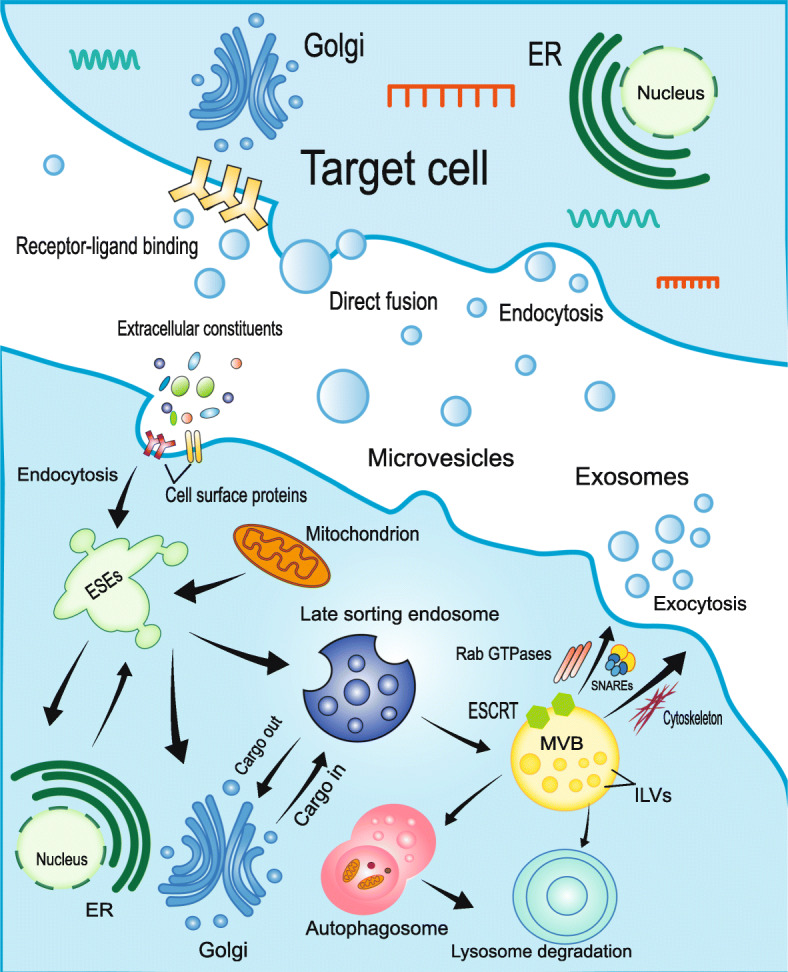Fig. 1.

The mechanism of exosome biogenesis, secretion, and uptake. Microvesicles are released through plasma membrane budding. Extracellular constituents and cell surface proteins form the early sorting endosome (ESEs) through endocytosis along with plasma membrane budding inward. The endoplasmic reticulum (ER), Golgi, and mitochondria are involved in the maturation of ESEs through fusion. ESEs give rise to late sorting endosome and multivesicular bodies (MVBs) in succession. Partial MVBs release their vesicles into the extracellular space as exosomes. Others are transported to lysosomes for degradation through fusing with autophagosomes or not. The formation of ILVs is mainly controlled by endosomal sorting complex required for transport (ESCRT). Rab GTPases, SNAREs, and cytoskeleton are involved in the regulation process of exosome secretion. Exosomes can deliver cargo to recipient cells by three methods: endocytosis, direct membrane fusion, and receptor-ligand binding
